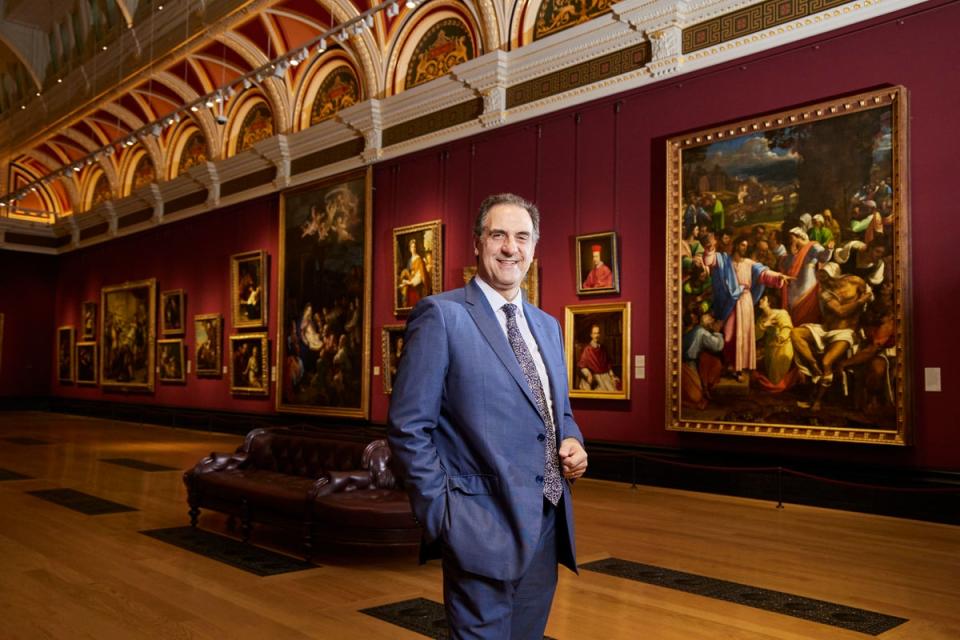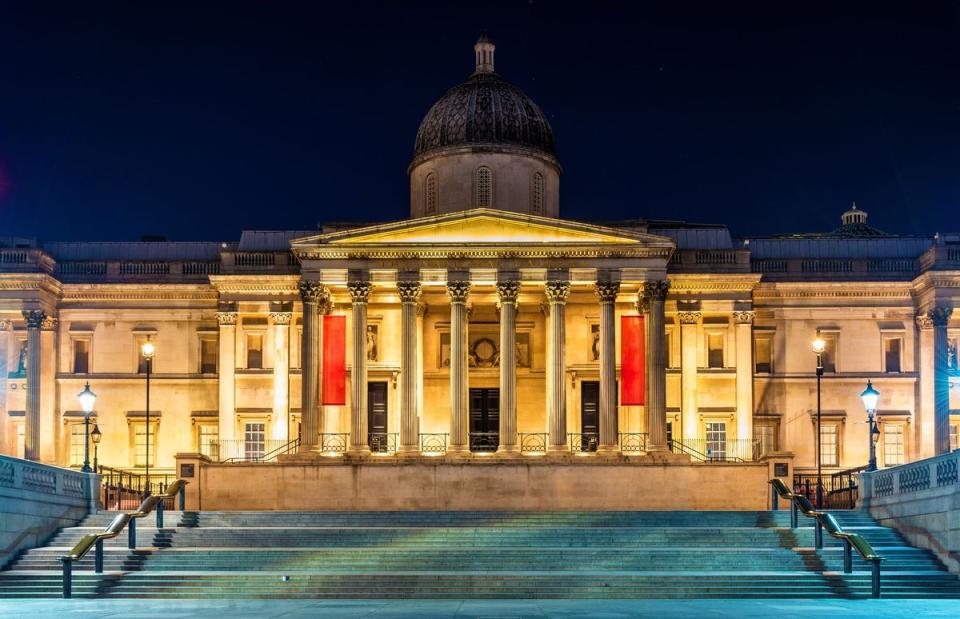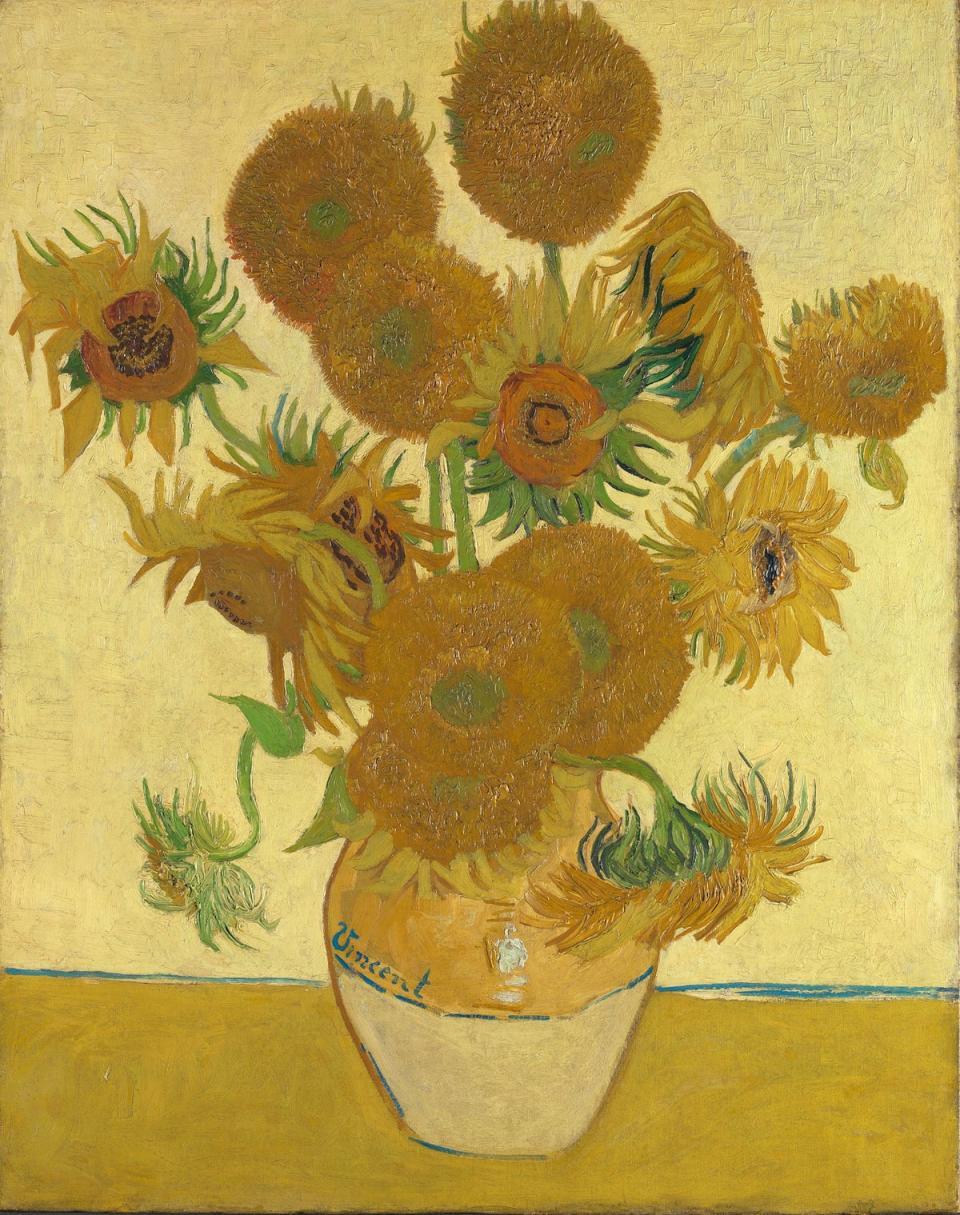The opportunity to celebrate the 200th anniversary of an esteemed institution is quite rare. But today, in the heart of London, the champagne corks will pop as the National Gallery, one of Britain’s greatest cultural jewels, reaches that venerable age.
There will be a huge weekend of festivities, kicking off with a spectacular light show projected onto the front of the famous neoclassical building in Trafalgar Square from 9pm tonight. There will also be concerts – led by Jools Holland – workshops, lectures and tours, as well as stories from the gallery’s storied history.
Gabriele Finaldi is the director of the National Gallery and sees into his 200s. “It is an enormous privilege to be part of the generation crossing the threshold into the third century,” he says. “It’s not like every year; the bicentennial has fueled people’s affection for the gallery and their generosity towards it.” He adds with a laugh: “If we could, we would extend the anniversary celebrations to 200 years.”
Over the past two centuries, more than 300 million people have come to see some of the most recognizable paintings in art history. Today they come from all over the world to experience the joys of the work of masters from Leonardo to Turner, Raphael to Van Gogh, Constable to Botticelli.
It may have global appeal, but its importance to London and its people is key. Finaldi, 59, says: “For Londoners, many of us grew up with the National Gallery; we felt it was ours and that it has become part of the fiber of our lives… It is embedded in the history of this country and the history of London.”

And it’s not just the National Gallery, he adds. “London is bringing people in; the cultural biosphere is unparalleled. If we’re just talking about collections – not about theater and music and other things – there is a wealth of world culture here, under the care of professionals, that can be shared with the public for almost two centuries. It is not the same in Paris, Rome or Madrid.”
Finaldi says the gallery is in good health, but “the bicentennial gives us the opportunity to be an even better museum.” This includes major building work and the privately funded £85 million renovation of the Sainsbury Wing, which will open next spring to mark the end of the bicentenary celebrations.
Everyone has their favorite works. In a film released to mark the 200th anniversary, Sir Michael Palin chose a work by Turner, Claudia Winkleman went for Leonardo’s Virgin of the Rocks and Princess Eugenie went for Correggio’s The Madonna of the Basket.
Today, Vincent van Gogh’s Sunflowers are the biggest draw in the gallery and sell the most items in the store, Finaldi says, a relatively recent development. When he started as a curator at the National Gallery in 1992, JMW Turner’s The Fighting Temeraire and Leonardo da Vinci’s The Virgin of the Rocks were the biggest draws.
The gallery is also updating its research and education centers and building a network of partners across the country.
“We have received this from previous generations and it is our job to ensure that we hand over the gallery in a better condition than we found it in,” says Finaldi. “With new acquisitions, a new understanding of what the gallery is about… and if we’ve done that, we’ve done a lot.”
Although the museum has not yet reached its pre-pandemic peak of more than six million visitors per year, it increased 14 percent last year to more than three million. “In a way it’s good not to have those numbers now because a third of our estate is closed. I mean, look at the gallery,” says Finaldi.
We’re walking around on a Thursday afternoon and it’s busy. Full of tourists, locals, day trippers, families and children on school trips.
The gallery’s origins date back to 1824, when the government, under pressure from art activists eager for Britain to establish a national collection, purchased works owned by London businessman John Julius Angerstein.
Those first 38 photographs were exhibited in Angerstein’s home at 100 Pall Mall, but as the collection grew a new, larger location was needed and the gallery moved to its current location in 1838.


It was felt that all classes of society could enjoy it at the site, with the promise of free entry. Finaldi says: “Many other countries did this, and it was felt that this country, as the capital of an empire, needed a leading arts institution to beautify the city. But it was also a place of education, where British society could mingle peacefully.”
The gallery expanded over the years with new wings and rooms – most recently the Sainsbury Wing, which opened in 1991. It also suffered bomb damage during the Blitz. The total floor area now corresponds to approximately six football fields. The National Gallery’s remit is to cover European painting from the Middle Ages to the early 20th century (the last photograph dates from the 1920s).
However, as director of a collection of historical works, Finaldi is aware of the need to ensure that it is a living museum and not a mausoleum.
“Although these works are rooted in a moment in history, we as a society find them important in a way, so they have remained relevant. They are still talked about, researched and copied, and they inspire contemporary artists.” Clearly interest is not waning, not only from the public, but also from the glitzy summer party it is starting to throw: last year it attracted Maya Jama, Grayson Perry and Bella Freud, although this year it is on ice, surpassed by the birthday celebrations.
When the gallery fully reopens, the collection will be adapted, just as Tate Britain did in 2023, giving it the opportunity to tell different stories and showcase different painters. Finaldi says that due to the lack of diversity in the collection, more research is underway to rethink what stories the gallery tells, especially around underrepresented groups.
Another part of the director’s job in 2024 is to protect the collection, after protesters attacked works such as The Hay Wain, Sunflowers and the Rokeby Venus. Keeping them safe, he says, is a huge challenge. “It’s always shocking news when you hear that a photo has been attacked,” Finaldi recently told the BBC. “I am angry at the protesters for damaging something that is valuable to all of us.”
Another challenge concerns education and the threat of declining school trips. He hopes that culture will become more embedded in the school curriculum. ‘Math, science and literacy are crucial, but if we want to be complete human beings, we need the nourishment of history, of beauty and music. Museums are places where all this can happen.
“It’s not just about art history, it’s about understanding how society functioned, and how people in history dealt with things that we all deal with now – whether it’s death or love, family or faith. Most things are represented in our works, and it is up to us to find ways to make them all come alive.”


And even classical artists go in and out of fashion. Caravaggio is now a blockbuster, but that has only changed in the last seventy years, and of course there is Van Gogh, who never sold a work in his lifetime. “Over the past thirty years, Van Gogh has become a bulldozer that dominates everything, and Sunflowers have become a talismanic image for us. He wanted to paint something cheerful, uplifting and friendly. It continues to do so a century and a bit later.”
There are around 2,400 paintings in the National Gallery’s collection, and when the whole gallery reopens next spring it will be able to exhibit around 1,000 of them. ‘It’s a small collection; I’ve worked at the Prado, which has eight thousand, the Louvre has those kinds of numbers, and the Tate has more than us. You never get to see more than half of the collection on display. On the one hand, we are a very small collection, but it is a huge part of our collection that is on display.”
Finaldi walks the corridors of the gallery every day, something he learned from former National Galley and British Museum director Neil MacGregor.
“He said this is the best way to keep up to date with what’s happening in the gallery, to get a sense of how the public is responding to the collection. So that the room attendants can tell you things if necessary and you can regain your strength at the end of the day. You realize this is what it’s all about.”
It clearly still gives him goosebumps. “The National Gallery is like a beautiful treasure chest of jewels, which you open and becomes much bigger than you initially thought. Every photo is a discovery, if you just give it time.”
nationalgallery.org.uk